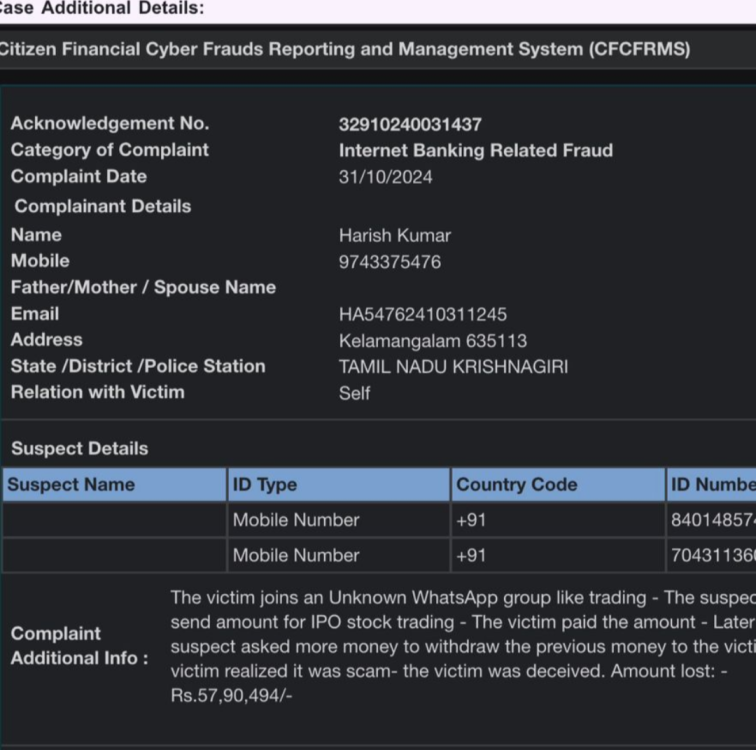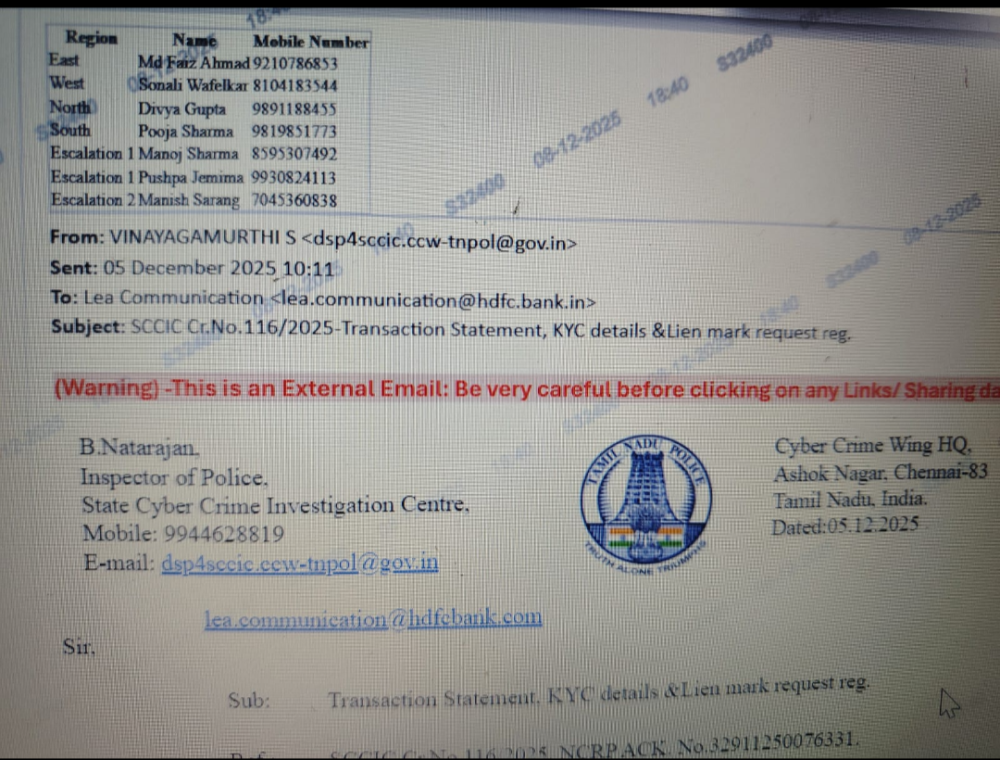All Activity
- Today
-
NextDend joined the community
-
Sabi01 started following Help / Feedback
-
Sabisingh joined the community
-
Sabi01 started following VIP Challenges
- Yesterday
-
Maxymax joined the community
-
Noob-Ertin joined the community
-
Ramsetu started following Maximo_BCGAME1
-
BC.GAME’s Ultimate Christmas & New Year Giveaway!
Zlzitcospb replied to BCGame_Maxim's topic in VIP Challenges
POLAND id-200613 -
Zlzitcospb joined the community
-

BC.GAME’s Ultimate Christmas & New Year Giveaway!
MeninaDtrap replied to BCGame_Maxim's topic in VIP Challenges
wouldnt this be something awesom,e to get. UID- 3341675 USA -
Do you know anybody know where I can get a promo code
Qajadbzmlpyb replied to Tvihkhmzuycc's topic in User Events & Promos
https://bcgame51.com/i-1jrxrxr0x-n/ -
Qajadbzmlpyb started following Maximo_BCGAME1
-
Qajadbzmlpyb started following Deposit not credited in my account
-
Qajadbzmlpyb joined the community
- Last week
-
Fvdozgsra joined the community
-
stepper3 started following Your account is temporarily unavailable
-
Your account is temporarily unavailable
stepper3 replied to Scuxmfickvcc's question in Help / Feedback
Hi how to recover my BC games account -
stepper3 joined the community
-
The Complete Guide to Growing Your Business Online India is witnessing a massive digital transformation. From small local businesses to large enterprises, everyone is competing for online visibility, customer attention, and digital trust. Today, customers do not rely on word-of-mouth alone—they search on Google, compare brands online, read reviews, and analyze digital presence before making a decision. If your business is not visible online, you are losing customers every single day. This is where choosing the Best Digital Marketing Agency in India becomes critical. A professional agency helps businesses attract the right audience, generate quality leads, improve brand credibility, and achieve sustainable growth. Digital Nawab is a trusted Digital Marketing Agency in India offering result-driven SEO, Google Ads, Social Media Marketing, and Website Development services to help businesses grow nationwide. This pillar guide will help you understand: What a digital marketing agency does Why digital marketing is essential in India How to choose the best digital marketing agency How Digital Nawab helps businesses achieve real growth What Is a Digital Marketing Agency? A Digital Marketing Agency is a professional service provider that helps businesses promote their products and services through online platforms. Unlike traditional marketing, digital marketing focuses on data, performance, targeting, and measurable ROI. A full-service digital marketing agency in India typically handles: Search Engine Optimization (SEO) Google Ads & Pay-Per-Click (PPC) Social Media Marketing Content Marketing Website Design & Development Online Branding & Lead Generation The goal is simple: increase visibility, generate leads, and grow revenue. Why Digital Marketing Is Essential for Businesses in India India has one of the largest internet user bases in the world. Customers now search for everything online—from local services to enterprise solutions. Businesses that fail to invest in digital marketing struggle to survive in this competitive environment. Key reasons why digital marketing is important in India: 1. Customers Are Online Indian consumers actively use Google, YouTube, Instagram, and LinkedIn to research before purchasing. 2. Cost-Effective Growth Compared to traditional advertising, digital marketing offers higher ROI with lower investment. 3. Targeted Reach You can target customers based on location, interests, behavior, and intent. 4. Measurable Results Digital marketing provides real-time data, analytics, and performance tracking. 5. Scalability Campaigns can be scaled across cities, states, or the entire country. This makes hiring a Digital Marketing Agency in India a strategic business decision. Digital Marketing Agency vs Digital Marketing Company in India Many businesses are confused between these two terms. While they are often used interchangeably, they indicate slightly different approaches. Digital Marketing Agency in India Focuses on execution, campaign performance, lead generation, and measurable outcomes. Digital Marketing Company in India Focuses on long-term partnerships, trust, structure, and brand authority. Digital Nawab combines both—offering the agility and performance of an agency with the professionalism and reliability of a company. Core Services Offered by the Best Digital Marketing Agency in India 1. Search Engine Optimization (SEO) SEO is the foundation of long-term digital success. A professional SEO Agency in India helps businesses rank higher on Google for high-intent keywords. SEO services include: Keyword research & competitor analysis On-page SEO optimization Technical SEO improvements Content optimization Link-building strategy Local, national & international SEO SEO delivers consistent organic traffic and long-term leads. 2. Google Ads & Pay-Per-Click Advertising For businesses seeking immediate visibility, Google Ads is one of the most powerful tools. A professional Google Ads Agency in India ensures maximum ROI with optimized campaigns. Google Ads services include: Search Ads Display Ads Remarketing campaigns Conversion tracking Budget optimization Well-managed PPC campaigns deliver instant traffic and qualified leads. 3. Social Media Marketing Social media is no longer optional—it is essential for brand trust and engagement. A digital marketing agency helps businesses build authority across platforms like Facebook, Instagram, LinkedIn, and YouTube. Social media services include: Content planning & creation Paid social media advertising Brand awareness campaigns Lead generation campaigns Audience engagement strategy Strong social media presence increases brand recall and customer trust. 4. Website Design & Development A website is the backbone of all digital marketing activities. A professional Website Development Company in India ensures that your website converts visitors into customers. Key features include: Mobile-responsive design Fast loading speed SEO-friendly structure User-focused navigation Conversion-optimized layout A high-quality website improves both SEO and paid campaign performance. 5. Content Marketing & Online Branding Content plays a crucial role in building authority and trust. Blogs, landing pages, and service content help businesses rank on Google and educate potential customers. Content marketing benefits: Improved search rankings Brand credibility Higher engagement Long-term organic traffic Better lead nurturing How a Digital Marketing Agency Helps Indian Businesses Grow A professional Digital Marketing Agency in India does more than just run ads or post content. It builds a complete growth ecosystem. Key benefits: Increased online visibility Higher-quality leads Better conversion rates Strong brand authority Reduced customer acquisition cost Predictable and scalable growth This is especially valuable for startups, SMEs, and service-based businesses. Why Digital Nawab Is the Best Digital Marketing Agency in India Digital Nawab is a growth-focused Digital Marketing Agency in India that works with businesses across industries and locations. What sets Digital Nawab apart? Customized marketing strategies Strong expertise in SEO & Google Ads Transparent reporting and communication Affordable and scalable packages Local + national market expertise Focus on long-term business growth Instead of generic packages, Digital Nawab designs goal-driven digital strategies tailored to each business. Industries Served by Digital Nawab Digital Nawab works with businesses across multiple industries, including: Startups & small businesses Education & coaching institutes Healthcare & clinics Real estate & construction E-commerce brands IT & professional services Local service providers Each industry requires a unique digital approach, and Digital Nawab delivers customized solutions accordingly. How to Choose the Best Digital Marketing Agency in India Before hiring an agency, businesses should evaluate the following: 1. Proven Experience Check portfolio, case studies, and industry experience. 2. Transparency Clear pricing, deliverables, and reporting structure. 3. Strategy-First Approach Avoid agencies that jump straight into ads without planning. 4. Realistic Promises No ethical agency guarantees “#1 ranking overnight.” 5. Communication & Support Dedicated account management is essential. Choosing the right agency ensures long-term success, not short-term hype. Common Mistakes Businesses Make While Hiring a Digital Marketing Agency Choosing the cheapest agency Falling for guaranteed rankings Ignoring reporting & analytics Not defining clear goals Hiring without understanding strategy Avoiding these mistakes helps businesses get real ROI from digital marketing. The Future of Digital Marketing in India India’s digital ecosystem is growing rapidly. Businesses that invest in SEO, performance marketing, and branding today will dominate tomorrow’s market. Key trends include: AI-driven marketing Voice search optimization Video marketing growth Local SEO expansion Data-driven personalization Partnering with a future-ready Digital Marketing Agency in India ensures long-term competitiveness. Get Started with the Best Digital Marketing Agency in India If your business aims to: Increase qualified leads Improve Google rankings nationwide Build a strong online brand Achieve measurable growth Then Digital Nawab is the right digital partner for you. Contact Digital Nawab Phone: +91 88607 57649 Email: [email protected] Website: https://www.digitalnawab.com/ Address: B12 A, L. Road, Mahanagar, Lucknow – 226006, Indi
-
digitalnawab joined the community
-
BC_PepeJl joined the community
-
Naskleng013 started following WanRandovonsky
-
Naskleng013 started following versaciboosts
-
Are you struggling to climb the ranks in League of Legends? Tired of losing streaks and feeling stuck in your current tier? It’s time to take your gameplay to the next level with The Finals Boosting service! Whether you’re aiming for Gold, Platinum, or even Diamond, our professional team offers reliable league ranked boost services tailored to your goals. With experienced players handling your account securely, you can finally achieve the rank you’ve been dreaming of without the stress and frustration of solo climbing. Our ranked boost league services are fast, safe, and fully confidential. We provide regular updates, so you know exactly how your boost is progressing. Plus, our boosters adapt to your playstyle to ensure the transition feels seamless once you take back control of your account. Don’t waste another day stuck in low ranks—let The Finals Boosting help you reach new heights in League of Legends. Whether it’s solo queue or flex, our team has the skills to get you there. Ready to dominate the ladder? Try The Finals Boosting service today and experience the difference!
-
My uid is 42918662 My two ticket are panding For 30 day's The bc game is froud game
-
My ID number is 42918662 And my two deposit ticket are panding for last 30 day's 1. F-1851007373342456630 2. F-1851115878279181427
-
- bcgame
- bcgame coco
-
(and 3 more)
Tagged with:
-
ap-219 exam {New-Year} 2026! Salesforce AP-219 Practice Exam Dumps
Jamshi0007 replied to profkate's topic in Education / Strategy
Hello BC Game Support Team, I hope you are doing well. I would like to kindly ask if there is any New Year or Christmas bonus available for my account. I am an active user on BC Game and did not receive any bonus email or notification yet. Please check my account and let me know if I am eligible, or kindly resend the bonus if available. My details are: Username: 46314210 Registered Email: [email protected] Thank you very much for your support. Best regards, -
Do you know anybody know where I can get a promo code
ROENZON replied to Tvihkhmzuycc's topic in User Events & Promos
yes how to receive promo code in email.. I want to receive also -
Achieving Order Management Administrator Accredited Professional Accredited Professional certification is no longer just a bonus for your resume—it has become essential for professionals aiming to distinguish themselves in today’s highly competitive job market. Yet, reaching success in the AP-219 exam can be overwhelming due to common hurdles like outdated study guides, tight schedules, and confusion about the real AP-219 exam structure. This is exactly where deliver exceptional value. Designed with accuracy and refreshed frequently, our Salesforce AP-219 dumps offer genuine, exam-specific questions that reflect the actual test format. These resources not only save precious study time but also build confidence, making it possible to prepare for the AP-219 exam with focus and efficiency. By selecting QA4exam, candidates gain a preparation path that blends trustworthiness, relevance, and ease—transforming exam prep from a stressful task into a straightforward route to career advancement. Realistic Practice That Reflects the AP-219 Exam One of the biggest reasons candidates struggle is the lack of targeted and relevant AP-219 exam practice. Generic notes often skip over critical areas or fail to represent how the exam presents its questions. QA4exam bridges this gap by providing thoroughly verified Salesforce AP-219 dumps, perfectly mapped to official objectives. Each domain is carefully addressed, ensuring no key concept is overlooked. By training with these resources, learners sharpen their subject knowledge while also becoming comfortable with the question style they’ll face on exam day. With this strong preparation, candidates can approach the exam with confidence and a clear strategy—boosting their chances of passing on the very first attempt. Why Choose QA4exam Salesforce AP-219 Dumps ? QA4exam is trusted by countless professionals who rely on quality study material for their Certs journey. Our solutions empower learners to prepare smartly, cut through distractions, and focus only on what truly matters. With regularly updated content and realistic exam simulations, candidates gain a competitive edge in securing their desired Certs. If you’re serious about achieving Accredited Professional Certs, QA4exam gives you the ultimate toolkit for success. Claim Your 50% Discount Today!
-
bcd cocco code 4,23 $BCD Cocco Code valid For All players Lv
Dexter1994 replied to Maximo_BCGAME1's topic in Sports Discussion
24401420 Me uid 24401420 Dexter1994 -
bcd cocco code 4,23 $BCD Cocco Code valid For All players Lv
Estiloboy replied to Maximo_BCGAME1's topic in Sports Discussion
-
Case 1Order Details:Withdraw Amount: 25000 INROrder ID: F-1847607437977800173Status(f4): SuccessFee: 0 INRCreated Time: 1/11/2025, 10:19:20 pmCase 2Order Details:Withdraw Amount: 10000 INROrder ID: F-1847607632385834428Case 3 Order Details:Withdraw Amount: 50000 INROrder ID: F-1847141698153024199 UTR :530071143441 UTR: 530795694002 UTR: 530795688816 THe merchant is involved in fruad activities the money was ilegal i withdraw bank account is frozen due to these amount now it needs legal proceedings bcgame is telling me on we can't help you as i was complaint with in 30 days they didn't take action now if ask them check they replied that is more one month old that is not excuse that is scaming openly near about 10 deposit forfited or sacmed 15 withdrawal forfited that is not fairness
-
Deposit and Withdrawals Pending
BCF_K_MANAGEMENTSCAM replied to Deadpool2006's topic in Submit a Review
Case 1 Order Details: Withdraw Amount: 25000 INR Order ID: F-1847607437977800173 Status(f4): Success Fee: 0 INR Created Time: 1/11/2025, 10:19:20 pm Case 2 Order Details: Withdraw Amount: 10000 INR Order ID: F-1847607632385834428 Case 3 Order Details: Withdraw Amount: 50000 INR Order ID: F-184714 1698153024199 - Earlier
-
BC GAME DEPOSIT FRAUD I have been facing a serious issue with a deposit that was successfully paid from my side but has not been credited to my BC.Game account. I have provided every proof possible, yet I have received no resolution or meaningful support. Deposit Issue Details BC Game ID: 5160414 Amount: 15000 INR UTR: 391557750002 Order ID: F-1847495123321369581 TxID: 59968 Date & Time: 31/10/2025, 4:34:08 pm Status Shown on BC.Game: Canceled Credited Amount: 0 INR What Actually Happened I paid 15000 INR successfully through UPI. The amount was debited from my bank account. I have attached: Bank statement Payment confirmation screenshots Video proof of the transaction After creating a support ticket, it was canceled automatically, with no help provided. I contacted the merchant, and they confirmed they received the payment, but said I must contact BC.Game support for the credit. Unfortunately, BC.Game support: Provides only automated bot replies Does not offer any human assistance Does not respond to emails at [email protected] Leaves tickets pending for long periods with no action Why I Am Posting Here I have exhausted all official support channels: Live chat only replies with repetitive bot responses Email support has not responded for a long time Discord moderators simply redirect users back to the live chat bot In this case, the system clearly shows a deposit failure, but the amount was successfully received by the merchant, and all proof from my side is genuine and already submitted. I am requesting a manual review of this transaction, as this is serious and concerns real money lost due to system failure. Request Please review my transaction manually and credit the deposit amount to my account, or process a refund if crediting is not possible. All data, screenshots, and video proof can be re-submitted if needed. I hope this issue can be resolved professionally and promptly. Thank you.
-
The only way to make a million dollars at bc game
SylviaG8 replied to Creditmydeposit's topic in Crash
Thanks for your tips, I’ll keep them in mind.- 1 reply
-
- crash
- loss recover
-
(and 3 more)
Tagged with:
-
ReddyBook is a fast-growing online platform designed to give users a smooth, secure, and hassle-free betting experience. Known for its simple interface, quick navigation, and reliable features, ReddyBook makes it easy for both beginners and experienced players to enjoy sports and gaming in one place. Visit now- https://reddybookd.com/home
-
BC.GAME’s Ultimate Christmas & New Year Giveaway!
reddybooklive replied to BCGame_Maxim's topic in VIP Challenges
ReddyBook has made betting so much easier for me. The platform is smooth, the login is quick, and the odds update instantly. Really one of the best betting experiences I’ve had.” Know more-https://reddybookd.com/home












.png.5bbeb7bea1cc6890abab98195f90bbca.png)